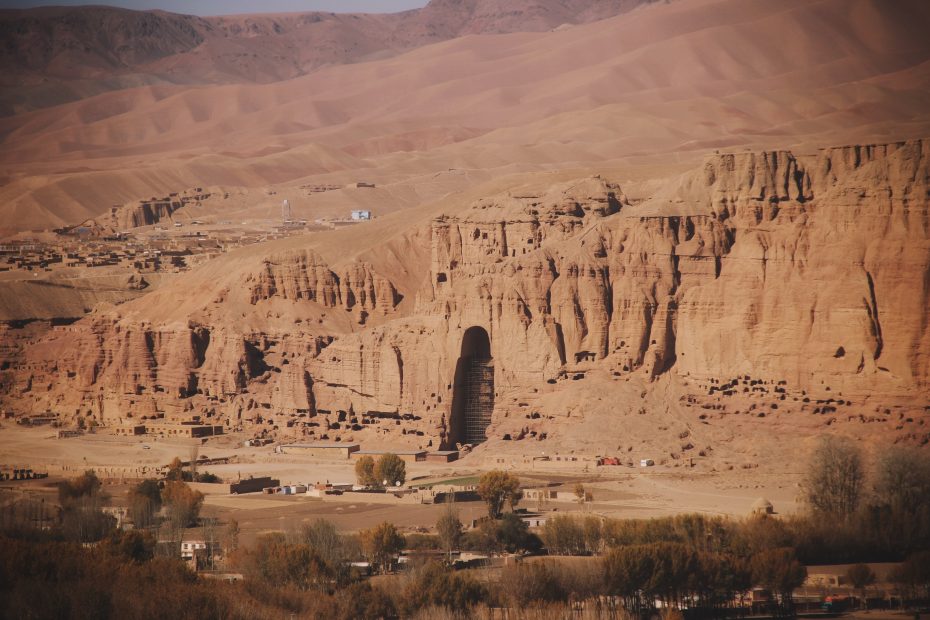Table of Contents
Introduction
Afghanistan is a country with a rich history and cultural heritage. Strategically located along the Silk Road, the country has been home to several ancient civilizations and has been influenced by many cultures over its long history. Though decades of war and conflict have impacted many aspects of life in Afghanistan, the country’s vibrant cultural traditions have endured. From its unique cuisine and clothing to mesmerizing music and intricate arts and crafts, Afghanistan has much to offer to visitors interested in getting a glimpse into its rich cultural heritage.
Cuisine
Food is an integral part of any culture, and Afghanistan is no exception. Afghan cuisine makes extensive use of meat, wheat, dairy products and fresh fruits and vegetables. Traditional Afghan dishes like kabuli pulao, a rice dish made with raisins, carrots, and lamb, mantu, steamed dumplings filled with meat and onions, and ashak, dumplings filled with leeks in a tomato based sauce, are popular across the country. Spices like cumin, cardamom, cinnamon, cloves and pepper are used liberally in Afghan cooking. Dried fruits, nuts and dairy products like yogurt are also key ingredients. No Afghan meal is complete without green tea, which is the national drink.
Clothing and Attire
Clothing and attire in Afghanistan reflect the country’s diverse cultural influences. Though modern Western clothing is becoming popular in cities, most Afghans wear traditional outfits. The shalwar kameez, loose trousers with a long tunic worn by both men and women, is the most common traditional outfit. Turbans and pakol hats made from wool are worn by Afghan men, while women wear brightly colored dresses with beautiful embroidery. Head scarves are common among women. Intricately designed tribal outfits are worn proudly by various ethnic groups around the country.
Languages
There are two official languages in Afghanistan – Persian, also known as Dari, and Pashto. Many Afghans are bilingual, speaking both Dari and Pashto. Several other regional languages are also spoken by minority ethnic groups, including Uzbek, Turkmen, Balochi, Pashayi and Nuristani. This linguistic diversity adds to the rich cultural tapestry of Afghanistan. Persian literature and poetry by iconic figures like Rumi have had an enduring influence on the country’s cultural heritage.
Music and Dance
Music is central to Afghan culture and plays an important role in celebrations and festivals. A popular folk music form is the rubab, a stringed instrument made from mulberry wood. Other instruments like the tabla, harmonium and sitar are also used in Afghan music along with poetry and vocals. The attan is a popular Afghan dance performed at weddings and other occasions, and involves fast-paced spinning movements set to the beat of the drums. Music and dance are essential ways for Afghans to express their cultural identity and preserve traditions.
Arts and Crafts
Afghanistan has a flourishing tradition of arts and crafts that provides employment to skilled artisans around the country. Intricately designed Afghan carpets and rugs with their colorful geometric patterns are globally renowned and are exported around the world. Wood carving is another popular craft, seen in the brightly painted doors and window frames as well as decoratively carved furniture. Decorative tilework and pottery with blue glazed designs, originating from the Ghori dynasty era, are also commonly found.
Architecture
The architecture of Afghanistan has evolved over centuries, incorporating influences from different periods and cultures. Traces of Greco-Buddhist artistic styles can be found in the designs of monasteries, temples and other structures from early periods. Grand mosques, forts, palaces and mausoleums constructed during the Mughal era showcase intricate decorative designs and arches. The best example is the breathtaking Blue Mosque in Mazar-i-Sharif, renowned for its blue tiled courtyard and minarets. Elaborate mosaics, calligraphy, minarets and domes form common elements seen across historic architectural sites in Afghanistan.
Sports
Sports are a popular recreational pastime for Afghans across the country. A traditional sport that originated in Afghanistan is Buzkashi, where players on horseback compete to place a headless animal carcass in a goal. It is commonly played at festivals and matches draw big crowds. Modern sports like football, cricket, boxing and wrestling have gained popularity over the years, with enthusiastic fans following leagues, teams and sports personalities. The strong sporting culture is another aspect of the country’s rich heritage.
Conclusion
Despite its turbulent history, Afghanistan has managed to preserve its vibrant cultural traditions which have endured for centuries. From the aroma of pulao wafting through bustling bazaars to the intricate designs woven into carpets, Afghanistan???s rich history is reflected in every aspect of its cultural heritage. Music, attire, languages and architecture all come together to create a diverse cultural identity that Afghans proudly uphold as their legacy to the world. Getting a glimpse into this heritage offers an unforgettable experience no matter how brief the encounter.
FAQs
Q: What are some popular traditional Afghan dishes?
A: Some popular traditional Afghan dishes are kabuli pulao, mantu, ashak, aushak, qorma, and kebabs. Extensive use of meat, wheat, dairy and spices is common.
Q: What are the most commonly worn traditional outfits in Afghanistan?
A: The loose pleated trousers and long tunic known as the shalwar kameez is the most commonly worn traditional outfit in Afghanistan for both men and women. Men also wear turbans and pakol hats.
Q: What are some architectural wonders in Afghanistan?
A: Some notable architectural sites include the Blue Mosque in Mazar-i-Sharif, the Buddhas of Bamiyan, the fortresses of Herat, the mausoleums of Timur Shah Durrani, and Babur’s Gardens in Kabul.
Q: What are the two official languages of Afghanistan?
A: The two official languages are Persian (Dari) and Pashto. Other regional languages like Uzbek, Turkmen, Balochi and Nuristani are also spoken by minority groups.
Q: What is Buzkashi and why is it culturally significant?
A: Buzkashi is a popular traditional sport in Afghanistan where players on horseback compete to place a headless animal carcass in a goal. It holds cultural significance as it originated in the country.
